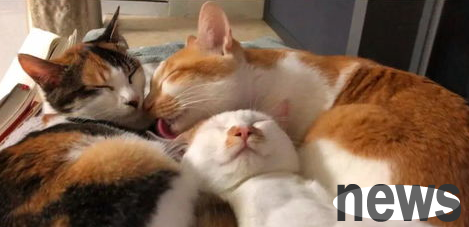Cats are pets who are more afraid of strangers, and they can also be said to be timid. When a cat is sick and needs to see a doctor, it is also very resistant. Various scratches lead to inability to treat it normally. It is very common to treat cats with anesthesia. If anesthesia is not used correctly, it may cause the cat to die! There are currently two common anesthesia, inhalation anesthesia and injection anesthesia, so what is the difference? Let’s find out below!

Determining the dosage of drugs
Whether it is injection or inhalation anesthesia, it is a very important step to determine the dosage of anesthesia based on body weight.
1. Preparation for injection of anesthesia drugs
The doctor first weighed the cat. Before the operation, three drugs should be injected. Before anesthesia, the medication is given before the operation, which is to relieve pain, reduce saliva or increase heart rate, and then anesthetics will be injected. The medicine is evaluated based on the cat's weight and is injected to the cat after dilution; the third shot is an anti-inflammatory injection.
2. Preparation of drugs for inhalation anesthesia. Inhalation anesthesia must also be prepared for induction anesthesia, so that the cat has a few minutes of fainting period, so that tracheal intubation is performed. Other drugs are no different from injection anesthesia.
The anesthesia and surgery are started
The kitten is anesthetized, but there is no need to worry. The hospital has also made careful preparations to reduce the suffering of the cat.
Intravenous anesthesia
The doctor left an intravenous needle in the forefoot, calculated the amount of anesthetic drugs according to the weight required, and injected them into the cat in batches as needed. Other injections are also injected into the body through this injection, which saves the pain of taking more injections, and reducing the amount of anesthesia can make the metabolism faster.
Before the operation, the kitten often had his tongue paralysis and could not retract because he wanted to lick his nose, and his eyes were also opened, which required the entire operation to help him drop and wipe his tongue.

Inhalation anesthesia procedure
The doctor first injects an inducible anesthetic, and the forefoot also leaves an intravenous pathway for easy administration during surgery. Then intubate and go to the ventilator. This step requires the doctor to be very skilled and fast to avoid problems caused by intubation errors.
During the operation, the drug slowly enters the trachea through a ventilator and finally reaches the nerve center, producing an anesthetic reaction. At this time, surgical monitors will be used to monitor the cat's heart, lung, blood oxygen condition at all times.
The cat wakes up soon, the cat wakes up, but it's still a little dizzy, and it takes time to wake up completely. The operation is over and the new cat birth is about to begin.
Anesthesia is important, and a minor operation may also cause the cat to die due to anesthesia. What kind of anesthesia to choose depends on the cat's body and surgical plan.
Inhalation anesthesia is metabolized faster than injection anesthetic drugs, is more controllable, and cats wake up faster. Injection anesthesia is easy to operate and widely used in small operations. For some elderly and weak cats, inhalation anesthesia can better ensure the safety of the surgery. Although inhalation anesthesia is good, not all surgeries are required. Choosing the appropriate anesthesia for surgery is the responsibility of the cat. If the cat shoveler needs to perform anesthesia surgery on the cat, he needs to take the cat to the pet hospital for examination in advance to see if the cat is suitable for anesthesia surgery. After all, each cat's physical condition is different. The cat's life is very short, don't take risks with its life.